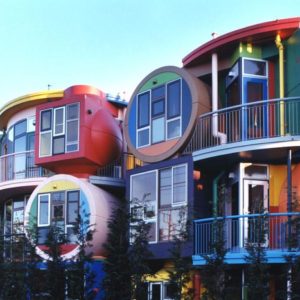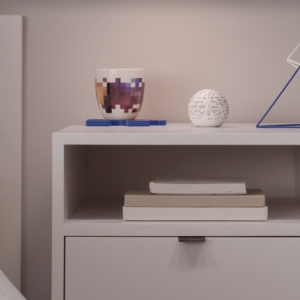Developing environments to be more efficient and effective in usability, Vancouver-based designer Darry Agawin truly creates form out of function, without neglecting aesthetic. The beauty in his work is that his designs are as visually appealing as they are operational, incorporating a sense of minimalistic loveliness that, despite its barebones practicality, prompts you to want to show it off.
“My work draws directly from my life experiences; I look around at my current situation and think about what I need,” Again explains. “I challenge myself to design a solution rather than find a product already out in the market.”
Each product is created as a solution with a purpose, either filling a void or making an experience simpler, more accessible, more engaging. They should be immediately recognized, and easily picked up and used. As with any design, his projects begin as conceptual, sometimes more than others, and transform into a practical resolution that functions and can be produced.
“Of course, I want my designs to be intuitively used. I want the user to be able to see an object and know how to use it without explanation.”
His career in product design began as a leap of faith. Growing up in a small town where prospective vocations lied in business or healthcare, he chose to study abroad focusing on the latter. In a bigger city, he realized that being a professional designer was a possibility and midway through science studies, he pushed for the transition.
“With no previous design work, I drew from the creative objects I’ve designed in the past and put together a submission for art school. If I were accepted, I would take a chance and pursue design; if I was denied, I would continue my studies in medicine. I got in and the rest was history.”
His last product, No, Sweat!, acknowledged for its immense practicality, melded the workspace with a fitness station. The three-piece series transforms from an office space into workout equipment, allowing users to take breaks and exercise regularly. Using common, straightforward techniques such as the balance board, weight bar, jump rope, exercise step and kettle ball, No, Sweat! calls on uncomplicated routines to create a number of workout sequences. Solving a dual space-finance issue, the setup is ideal for offices, coworking spaces, work-from-home headquarters, and teeny city apartments.
“No, Sweat! came from the idea that current exercise equipment can be overdesigned (or look as such), and so I wanted to remind people that to perform regular exercise, they don’t need to have a gym membership or fancy gym equipment.”
[vimeo 65448358 w=500 h=281]
No, Sweat! – teaser 2 from Darryl Agawin on Vimeo.
And yet, it still looks pretty. Though not yet in production as a working prototype, Agawin elucidates that his projects do not need to be redesigned in order to work.
“With No, Sweat!, I drew heavily from the shapes and forms of Memphis. I became fascinated with this design style and challenged myself to make a design that was simple, visually pleasing, as well as highly functional.”
His goal was also to make incorporating physical activity into everyday lives easier.
“The simplicity of the furniture set aids to show people that it is not essential to use specifically designed equipment to exercise, because the geometric forms found in No, Sweat! are all around us. If this message gets across somehow, I believe it will have made a difference with a meaningful product.”
His greatest challenge is to design for the future, and when he finds himself creating something less than innovative, his enthusiasm tends to fade.
”I set the bar quite high, which can explain a reduced output as of late.”
He explains that the “fun part” of being a designer is the ability to pull from a target audience, appealing firstly to them. The risk comes in when the creator has to add a hint of their personality to the piece; but it is also what gives the project its distinctive impression.
Inspired by everything, he draws new forms and combinations from art where the imaginations of others directly influence his work. He is most moved by the idea that design can lead to progress. As such, he’d like to see his work used in a practical setting.
“I try to design beautiful products; but seeing them in use is the real goal.”
His wildest dream?
“To travel through time.”


















Leave a reply